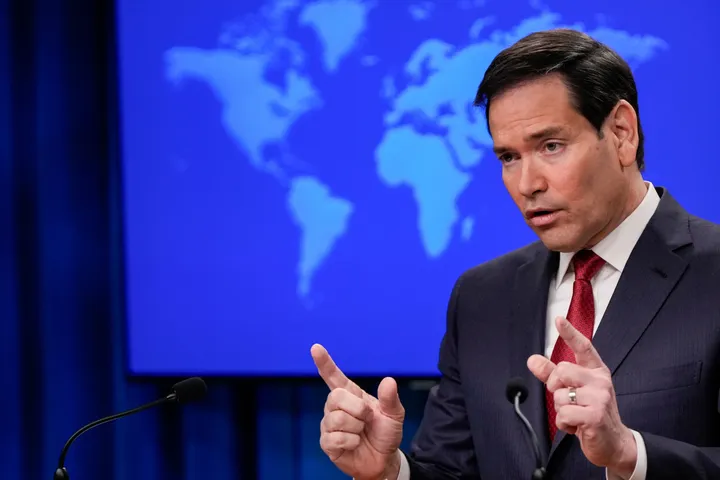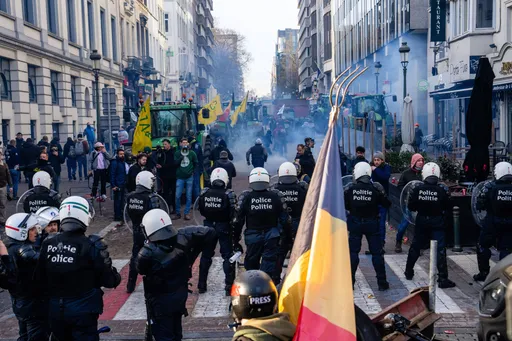“First, we started to read,” Nazan Olcer, the curator of the Sakip Sabanci Museum, says. The museum had decided to do an exhibition of Abdulmecid II's (b. 1868 - d. 1944) paintings, the last head of the Ottoman dynasty, two and a half years ago.
The decision was made while Abdulmecid II's paintings in the SSM collection were being examined under laboratory settings to give a better idea about his colours, technique, and materials. Olcer says she was intrigued by the artist’s painting process.
“For us, every exhibition begins with a long period of reading, trying to get to know the artist and their milieu,” she adds. “We try to get to know the person. We examine the time period they operated in. We put it under the lens, so to speak.”
“Caliph Abdulmecid Efendi is a significant figure in Turkish painting. Just as we’ve previously done exhibitions on the pioneers of Turkish painting, we couldn’t leave him out,” Olcer tells TRT World. “He has his place next to [forefathers of Turkish painting] Seker Ahmed Pasha (1841-1907), Osman Hamdi Bey (1842-1910) and Suleyman Seyyid (1842-1913). That’s why we have to focus on him as well.”
Only eight years old at his father's death, young Abdulmecid lives in Feriye Palace afterwards along with his elder sister Nazime Sultan. He attends school for sehzade with his brothers, Sevket and Seyfeddin Efendi, and is educated in sports, military training, French, German, history, literature, algebra, chemistry, Arabic and Farsi.
The Academy of Fine Arts (known today as the Mimar Sinan Fine Arts University) is founded in 1882, with instruction beginning in March 1883.
Abdulmecid II has close ties with the Academy of Fine Arts instructors; he takes art lessons from Osman Hamdi Bey and Salvator Valeri.
Between 1886 and 1888, Abdulmecid II sends several paintings to be displayed in the atelier of Athens Fine Arts Faculty sculpture instructor Georgios Vroutos, including the painting ‘Portrait of Sultan Abdulaziz.’
Abdulmecid II also befriends painter and instructor Fausto Zonaro, the court painter to Abdulhamid II, and takes painting lessons from him.
Abdulmecid II also takes lessons from Mekteb-i Sultani (now the Galatasaray High School) instructor Bertrand Bareilles, which leads him to form an art library and follow up on European publications.
“We were lucky with Abdulmecid Efendi,” Olcer says modestly, “because we know his family. I personally knew [his granddaughter] Neslisah Sultan, may she rest in peace. She was a good friend of mine. Thanks to her I got to meet the rest of the family, and they supported me greatly during the preparation stage of this exhibition.”
After the abolition of the caliphate by the lawmakers of the modern Republic of Turkiye in 1924, Abdulmecid II, the last head of the Ottoman Imperial House, made France his home. Olcer tells TRT World that the museum was very lucky to receive pieces from the country. She also says she learned a lot from Abdulmecid II's correspondence, from the archival work.
“There are works that are on display for the first time,” she enthuses. “We thought we knew a lot of the works he produced – turns out we were wrong,” she says. “Visitors to this exhibition will see more of his works than those that are on display at Dolmabahce Palace,” she adds. “That’s why I can say I’m happy with the result.”
Olcer says the museum is also planning a separate exhibition with Abdulmecid II's calligraphic works in the future.
“I’m sure,” she muses, “that historians working on his biography will come across many more documents. I’m sure there will be more artwork never seen by the public in private hands, that we haven’t reached out to because we didn’t know [that there were such works in existence].”
“I’m sure those will shape future endeavours.”
The exhibition at the Sakip Sabanci Museum, ‘Abdulmecid Efendi: The Prince’s Extraordinary World’, brings together 60 paintings and more than 300 documents –– 14 come from government agencies, 17 from family collections, private museum and gallery collections plus a 1926 self-portrait from Musee Massena collection in Nice where he spent the last 20 years of his life and two framed paintings he gifted Pierre Loti coming from Maison de Pierre Loti museum in Rochefort.
What Olcer calls “an exhibition within an exhibition,” there is also a highlight on six artworks by Abdulmecid II from the SSM collection analysing his painting technique, the restorations his paintings has gone through, the structure, colour, layers, and texture of the materials he used and the conditions of his artistic output, collected under the title “Abdulmecid Efendi: Beyond the Visible”, a collaboration between Sabanci University, Koc University and Istanbul University Faculty of Forestry.
As a bonus, if you listen closely enough, you will hear the music playing in the background, composed by Abdulmecid II's father, Sultan Abdulaziz. Abdulmecid II, the sultan’s first son born during his reign, witnessed the death of his father at a very early age and has never forgotten it, Olcer says at the news conference.
“He spent about 50 years of his life as a ‘sehzade,’ four years as a crown prince [veliahd], about 16 months as a caliph, the first and only one elected by the Grand National Assembly of Turkiye, and the last 20 years in exile,” Olcer continues.
“In his life of 76 years he has seen three regimes, two world wars, and witnessed the fall of the Ottoman Empire. Yet he was always a kind father and grandfather; he was a painter but he was also interested in music and the art of calligraphy,” Olcer says.
“And while he was attached to religion and tradition, he also was an open-minded Turkish intellectual conversing with the West,” she concludes.
The exhibition is at the seaside mansion-turned-museum named after late businessperson and philanthropist Sakip Sabanci – SSM, the Sakip Sabanci Museum. It will be on display until May 1, 2022 on the Gallery -2 floor. Visitors are welcome every day between 10 AM - 6 PM except Mondays, and between 10 AM - 8 PM on Saturdays.
























